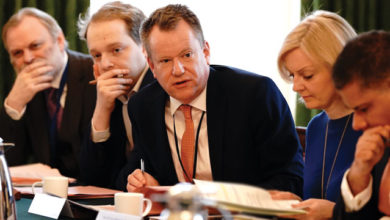Barnett for agriculture?

The release of ‘no deal’ contingency plans by the UK Government has once again raised concerns that the Barnett formula could be utilised in dispensing future agricultural support arrangements, a move that would be “devastating” for the farming industry in Northern Ireland.
The Common Agricultural Policy (CAP), which equates to 87 per cent of farm incomes in Northern Ireland, will no longer apply to the region once the UK leaves the European Union.
With or without a deal, the UK will be leaving the EU in March 2019 and will have responsibility to dictate its own agricultural policy, a move which will undoubtedly change the nature of support for the sector.
The Department for Environment, Food and Rural Affairs (Defra) is the lead for the UK Government on overall negotiations and reporting to the EU on the CAP, and is responsible for administering the CAP in England. However, the devolved administrations are responsible for administering the CAP in Scotland, Northern Ireland and Wales.
Under the draft Withdrawal Agreement between the UK and the EU, it is anticipated that existing regulations under CAP in relation to direct payments will continue to apply in 2019. Direct support from 2020 would operate under domestic legislation. The UK Government has pledged to maintain the same cash funds as currently assigned for CAP until the end of the Parliament, under the expectation that this will be 2022. However, there is still no clarity as to what method will be used to distribute these cash funds, with Barnett a possibility.
Work is already underway by Defra and the devolved administrations to introduce new agriculture policies. The Agriculture Bill will legislate for changes in England and public consultations have been launched in each of the devolved regions. In August, the Department of Agriculture, Environment and Rural Affairs (DAERA) opened a consultation on the ‘Future Agricultural Policy Framework’.
The consultation document states: “The Department’s objective will be to ensure that the share of the UK agricultural budget made available to Northern Ireland will reflect Northern Ireland’s current combined CAP Pillar 1 and Pillar 2 share and that it will be sufficient to deliver the outcomes sought under this framework.”
Pillar 1 of the CAP currently provides approximately €327 million per annum of direct support to Northern Ireland farmers, paid out as decoupled support on a per hectare basis. Pillar 2, a range of rural development schemes which assist farm businesses, delivered over £200 million to improve economic and environmental performance over the past five years.
While the framework outlines various proposals for medium to long-term approaches to deliver a new agricultural support framework locally, including potentially retaining the entitlements system currently utilised in the Basic Payment Scheme (BPS), continuing progression to reach a flat rate BPS payment per hectare by 2021 and the abolishing of current greening requirements, with the greening payment incorporated into Basic Payment entitlement values, it does not directly deal with how funding from Westminster may be allocated.
“If we were to move to the Barnett formula, it would have a hugely significant impact for Northern Ireland. We would lose two-thirds, of our existing level of support.”
agendaNi understands that a suggested proposal from Whitehall is for the utilisation of the Barnett formula in distributing funds to the devolved regions. Barnett has been the basis of public funding by the UK Government for Northern Ireland since 1980, and is also applicable to Scotland and Wales.
It is used to determine allocations on the basis of inherited levels of expenditure and proposed changes in expenditure. While the Barnett formula determines the overall allocations, the devolved administrations have discretion over how the total sum is divided up between devolved programmes.
Its critics highlight that it is not based on a calculation of need and therefore contributes to an unequal distribution.
Brexit has raised the possibility that funding for repatriated functions such as agricultural subsidies will fall under Barnett, or a new system will be devised. While Whitehall has committed to EU funding levels for the short-term, it appears likely that it will seek to reduce the financial contributions in the long-term.
This move would be most detrimental in Northern Ireland, which currently receives around 10 per cent of the UK’s agricultural support payments from Europe, despite being just 3 per cent of the population. Where the Barnett formula to be applied post-Brexit, this figure would likely reduce to around 4 per cent.
Ulster Farmers’ Union President, Ivor Ferguson, has suggested that such a dramatic drop would equate to a loss of around £200 million in financial supports annually and would be “devastating” for the industry.
“The Government has committed to the current level of funding until 2022. While no written guarantees have yet been provided on the regional allocation of this funding, the UFU has consistently argued that we must retain the existing output related distribution method going forward.





